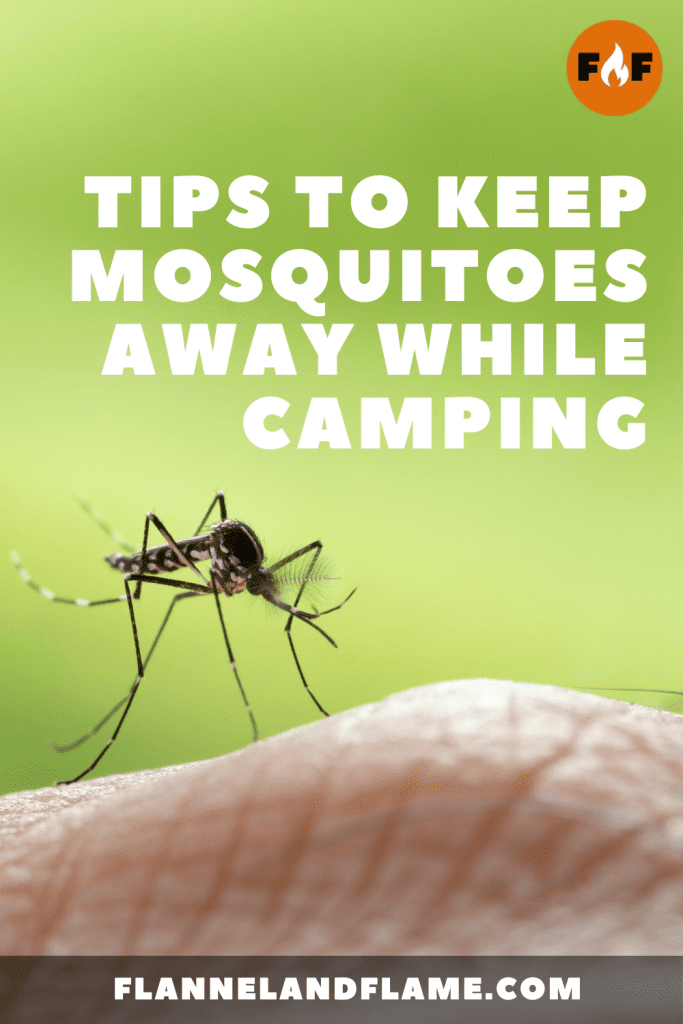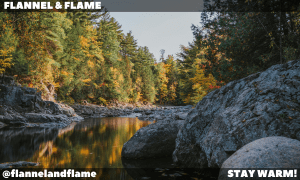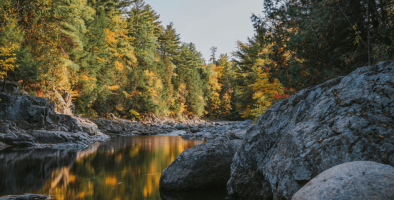Camping with Mosquitoes: A Complete Guide to Enjoying the Outdoors Without the Buzz
The sun dips below the treeline, casting long shadows across our campsite. The day’s heat gives way to a pleasant evening coolness. I reach for my mug of campfire coffee and take a deep breath of pine-scented air. Perfect. Then I hear it—that familiar, high-pitched whine circling my ear. I don’t even need to look. I know exactly what it is. The unofficial mascot of summer camping has arrived: the mosquito.
If you’ve spent any time outdoors, you know this moment all too well. One minute you’re soaking in nature’s splendor, and the next, you’re frantically swatting at invisible assailants that somehow always find that one patch of exposed skin you forgot to cover. But here’s the thing—mosquitoes don’t have to ruin your camping trip. After years of trial and error (and more bug bites than I care to count), I’ve developed a comprehensive approach to keeping these persistent pests at bay.

Tips to Keep Mosquitoes Away While Camping
Understanding Your Tiny Adversary
Before we dive into repellent strategies, let’s take a moment to know our enemy. Mosquitoes aren’t just random annoyances—they’re sophisticated hunters with evolutionary advantages working in their favor.
Female mosquitoes (the only ones that bite) can detect carbon dioxide from up to 50 feet away. Every time you exhale, you’re essentially broadcasting your location. They’re also attracted to body heat, certain body odors, and even the colors you wear. Dark colors like navy and black? You might as well be wearing a “bite me” sign.
During a camping trip to the Boundary Waters last summer, I watched in amazement as my friend Jake, dressed in head-to-toe navy blue, became a veritable mosquito magnet while I, in my light khaki pants and shirt, received significantly fewer bites. Coincidence? The research suggests otherwise.
Mosquitoes are most active during dawn and dusk—those beautiful golden hours when you’re most likely to be sitting around the campfire or preparing meals. They’re weaker flyers than you might think, which is why breezy days often provide natural relief. And they absolutely love standing water, which serves as their nursery for the next generation of tiny vampires.
Armed with this knowledge, we can now craft our defense strategy.
Creating a Mosquito-Resistant Campsite
Your battle against mosquitoes begins before you even arrive at your destination. When choosing a campsite, location matters—a lot.
Last year, my family and I were camping in the Ozarks during a particularly wet spring. We had two sites to choose from: one near a picturesque but stagnant pond, and another on a slight hill with good airflow. Though the pond view was tempting, we opted for the breezy hilltop. That simple choice cut our mosquito encounters by at least half.
Here’s my tried-and-true checklist for selecting and setting up a mosquito-resistant campsite:
Pick high ground whenever possible. Mosquitoes prefer low, damp areas where water collects. A site with a gentle slope will keep water moving away from your tent, not pooling underneath it.
Look for natural breeze channels. Mosquitoes struggle against even mild winds, so a site with natural airflow offers built-in protection. River corridors, lakeshores with consistent breezes, and mountain passes often provide this advantage.
Set up away from standing water. That serene little pond might look like a perfect backdrop for your Instagram camping shots, but it’s also prime mosquito real estate. For every 10 feet you move away from standing water, you significantly decrease your mosquito exposure.
Time your trips strategically. If possible, schedule your camping adventures during slightly cooler, less humid periods when mosquito activity naturally decreases. Early spring and fall camping often reward you with fewer bugs.
Once you’ve chosen your site, how you set it up matters too. Position your tent entrance away from the densest vegetation, where mosquitoes rest during the day. Keep your site tidy—mosquitoes love to hide in clutter. And if you’re camping with a group, space tents at least 10 feet apart to avoid concentrating carbon dioxide, which acts like a mosquito dinner bell.
Personal Protection: Beyond the Basics
We’ve all used bug spray, but effective personal protection goes well beyond a quick spray before heading outdoors. It’s about creating a comprehensive shield between you and those hungry mosquitoes.
I learned this lesson the hard way during a Midwest camping trip where I relied solely on spray-on repellent. By the second day, I had bites in places I didn’t even know mosquitoes could reach. That’s when I developed my layered approach.
Start with your clothing. Long sleeves and pants are obvious choices, but the type of fabric matters too. Mosquitoes can bite through tight-fitting or thin materials, so opt for looser, tightly woven fabrics. Mosquito net clothing, particularly head nets, can be lifesavers in heavily infested areas.
Remember my friend Jake with his navy blue outfit? Light-colored clothing (khaki, beige, light green) not only attracts fewer mosquitoes but also makes it easier to spot ticks—a bonus for overall insect defense.
Treat your clothes before the trip. Permethrin-treated clothing provides an excellent first line of defense. Unlike topical repellents, permethrin binds to fabric fibers and remains effective through multiple washings. I spray my camping clothes, tent, and even my backpack about a week before any summer camping trip. Just remember, permethrin is for gear, not skin.
During a particularly mosquito-heavy season in northern Minnesota, I conducted a little experiment. I treated one pair of hiking pants with permethrin and left an identical pair untreated. The difference was remarkable—the treated pants had noticeably fewer mosquitoes landing on them throughout the day.
Choose the right repellent for your skin. DEET has been the gold standard for decades, but it’s not the only option. Picaridin offers similar protection without the greasy feel or potential to damage synthetic fabrics. Oil of lemon eucalyptus provides a plant-based alternative that’s surprisingly effective.
Application technique matters more than most people realize. Mosquitoes are opportunity seekers—they’ll find that patch of skin at your wristbone where your sleeve rides up or that spot behind your ear that you missed. Apply repellent methodically, not haphazardly.
For evening campfire sessions, I’ve found that layering methods works best: permethrin-treated clothes as the foundation, skin repellent on exposed areas, and perhaps a mosquito coil or thermacell device creating a perimeter around the seating area.
The Camp Kitchen: An Unexpected Battleground
One often-overlooked aspect of mosquito management happens around your camp kitchen. Food preparation and cleanup can either attract or repel mosquitoes, depending on your approach.
On a family camping trip to the Great Smoky Mountains, I noticed that mosquito activity spiked dramatically during our evening meal prep. At first, I assumed it was just the time of day, but after some experimentation, I realized our cooking habits were contributing to the problem.
Minimize standing water in your kitchen area. Empty wash basins promptly and wipe down water-collecting surfaces. Even bottle caps filled with rainwater can become mosquito nurseries in warm weather.
Handle food waste carefully. Food residue, particularly sweet substances, can attract mosquitoes. Clean cooking surfaces thoroughly and store trash securely away from your main camp area.
Consider natural repellents in your cooking. Some food items pull double duty as mild mosquito deterrents. Garlic, onions, and certain herbs like rosemary and sage have mosquito-repelling properties when burned or consumed. While not powerful enough to be your only defense, incorporating these ingredients into your camp menu adds a subtle layer of protection.
My favorite camping pasta sauce now includes extra garlic and rosemary—delicious and potentially helpful for keeping mosquitoes at bay while we cook and eat.
Technology and Tools: From Simple to Sophisticated
The mosquito repellent market has exploded with options, from ancient techniques to space-age gadgets. After years of testing, I’ve found that the most effective approach combines multiple methods.
Thermacell devices have become my go-to for stationary protection around camp. These portable units create a roughly 15-foot zone of protection by heating a repellent mat—no spray, no smell, no mess. During a particularly buggy camping trip in Michigan’s Upper Peninsula, my Thermacell turned our picnic table from a mosquito feeding frenzy to a comfortable dining spot.
Mosquito coils offer an affordable, low-tech option that’s been used for generations. The slow-burning spiral releases a mosquito-deterring smoke that works surprisingly well in calm conditions. I position these strategically around the perimeter of our camp kitchen.
Portable fans serve double duty in camp—they provide cooling breeze and actively disrupt mosquito flight patterns. Even a small battery-powered fan pointed at your camp chair can significantly reduce landing opportunities for these weak flyers.
Mosquito head nets look dorky but work wonderfully when the bugs get truly fierce. I keep them compressed in a small stuff sack, ready to deploy when those dawn or dusk hours bring peak mosquito activity.
Mosquito-repellent wristbands are controversial—some campers swear by them, while research suggests limited effectiveness. I’ve found they provide modest protection directly around the wrist area but shouldn’t be your primary defense.
Natural Approaches That Actually Work
Pinterest and outdoor forums overflow with “natural” mosquito repellent ideas, many of which fall somewhere between marginally effective and complete nonsense. Through extensive experimentation, I’ve identified several natural approaches that genuinely help:
Smoke matters. Mosquitoes avoid smoke, which disrupts their ability to detect carbon dioxide and body heat. Position yourself upwind of your campfire to maximize this natural protection. Adding a bit of sage or rosemary to the fire can enhance the repellent effect.
Essential oils have varying degrees of effectiveness. Lemon eucalyptus oil stands out as the most research-backed natural repellent, with efficacy approaching that of low-concentration DEET in some studies. Citronella, while popular, provides shorter protection windows and requires frequent reapplication.
During a weekend camping trip in Georgia’s humid lowlands, I rotated between commercial repellents and various natural options. The lemon eucalyptus oil performed impressively, offering about two hours of solid protection before needing reapplication.
Creating physical barriers counts as natural protection too. Mesh screens for dining shelters, properly sealed tent doors, and even mosquito nets hung over hammocks can create mosquito-free zones without chemicals.
Timing your activities to avoid peak mosquito hours represents perhaps the most effective natural strategy. Planning strenuous hiking during mid-day when mosquitoes are less active, then retreating to a protected area during dawn and dusk, dramatically reduces your exposure.
When Prevention Fails: Treating Mosquito Bites
Let’s face reality—even with perfect preparation, you’ll likely get at least a few mosquito bites during your camping adventure. Having a bite treatment strategy improves comfort and prevents the potential secondary infection that can come from excessive scratching.
After a particularly vicious mosquito encounter in Florida’s Everglades (where the mosquitoes seem roughly the size of hummingbirds), I developed this post-bite protocol:
Act quickly. The sooner you address a bite, the less intense the reaction will be. I keep single-use antihistamine wipes in an easily accessible pocket specifically for immediate bite response.
Cool it down. A cold compress reduces swelling and temporarily numbs the area. Even a cold water bottle pressed against fresh bites provides relief.
Avoid scratching at all costs. This is easier said than done, but scratching not only increases inflammation but also raises infection risk. I’ve found that slapping or firmly pressing on itchy bites provides momentary relief without breaking the skin.
Pack dedicated bite treatment. Over-the-counter options like hydrocortisone cream, calamine lotion, or specialized anti-itch gels are worth their weight in gold when the buzzing bandits break through your defenses.
Several camping seasons ago, I discovered the unexpected effectiveness of tea bags for bite relief. The tannins in black tea have natural astringent properties that reduce itching. Now I always save a used tea bag from my morning brew to cool and apply to any overnight bites.
Building Your Personal Mosquito Defense Kit
After countless camping trips in mosquito territory, I’ve refined my mosquito management system to include a specialized kit that comes with me on every warm-weather outdoor adventure. Here’s what’s in my mosquito defense pack:
- Permethrin spray for pre-treating clothes and gear
- EPA-registered skin repellent (I rotate between 20% picaridin and 25% DEET)
- Thermacell device with extra repellent mats
- Lightweight mesh head nets for the whole family
- Antihistamine wipes for immediate bite treatment
- Hydrocortisone cream for persistent itching
- Small portable fan for tent and camp chair
- Mosquito coils and windproof lighter
- Duct tape for quick tent hole repairs (mosquitoes are remarkably good at finding entry points)
This kit weighs less than two pounds total and has transformed our family camping experiences from swat-fests to actual relaxation.
The Environmental Perspective: Ethical Mosquito Management
As much as we may dislike mosquitoes, they remain part of the ecosystem we’re visiting. Certain mosquito control methods can have unintended consequences for other species we cherish.
Bug zappers, for instance, predominantly kill beneficial insects while having minimal impact on female mosquitoes. Broad-spectrum insecticides may eliminate mosquitoes but can also harm butterflies, bees, and aquatic organisms.
My approach focuses on personal protection rather than widespread mosquito killing. By creating a mosquito-resistant zone immediately around our campsite and protecting our bodies directly, we minimize our ecological footprint while still enjoying our outdoor experience.
Embracing the Reality: Some Perspective on Our Tiny Nemesis
The evening campfire crackles, sending sparks toward the emerging stars. I take another sip of my coffee, now cooled to the perfect temperature. Yes, I’ve applied my repellent, positioned my chair in the campfire smoke, and treated my clothes with permethrin. I might still get a bite or two before the night ends—and that’s okay.
Part of embracing outdoor adventure means accepting its minor discomforts alongside its magnificent rewards. While I’ve shared extensive strategies for minimizing mosquito encounters, I’ve also learned to adjust my expectations. In certain environments and seasons, mosquitoes simply come with the territory.
The spectacular sunset over the lake, the laughter around the campfire, and the profound stillness of a forest at dawn—these experiences far outweigh the occasional itch. With thoughtful preparation and a positive attitude, you can shift mosquitoes from trip-ruining pests to minor background characters in your outdoor adventure story.
So pack your repellent, choose your campsite wisely, and venture forth with confidence. The wilderness is calling, and a few mosquitoes shouldn’t keep you from answering.
More from Flannel & Flame…
- Mexican Bean SaladBold, zesty, and bursting with color, this Mexican Bean Salad is a side dish that brings the flavor anywhere you roam. A hearty mix of black, kidney, and cannellini beans comes together with crisp bell peppers, sweet corn, and red onion, all tossed in a citrusy vinaigrette loaded with fresh cilantro and just the right… Read more: Mexican Bean Salad
- Cheesy PotatoesGolden, gooey, and loaded with flavor, these Dutch Oven Cheesy Potatoes are a campfire favorite that never disappoints. Tender hash browns are layered with melted cheese, savory seasonings, and just the right amount of smoky goodness from the fire. Baked slow and steady in a Dutch oven, this comforting side dish is perfect alongside grilled… Read more: Cheesy Potatoes
- Alternatives to S’Mores: Sweet Twists and Campfire Treats You’ll CraveThere’s something undeniably magical about a gooey s’more melting between your fingers under a starlit sky. The way the chocolate gets just soft enough, the marshmallow smolders to a golden hue (or charred to a crisp, if that’s your thing), and the graham crackers give that perfect crunch — it’s the taste of summer, nostalgia,… Read more: Alternatives to S’Mores: Sweet Twists and Campfire Treats You’ll Crave
- Best Hiking in New YorkWilderness, waterfalls, and wonder from the Catskills to the Adirondacks New York might be synonymous with skyscrapers, yellow cabs, and a certain iconic skyline—but trust me, beyond the hustle of the city, the Empire State hides some of the most jaw-dropping trails in the Northeast. We’re talking misty mountaintops, mossy forests, gorges carved by ancient… Read more: Best Hiking in New York








